Do you have a question about the Terex TA50RT and is the answer not in the manual?
Outlines operator's role in safety, compliance with regulations, and safe work practices.
Identifies DANGER, WARNING, and CAUTION signals used to convey safety information.
Defines 'DANGER' as an imminent hazardous situation leading to death or serious injury.
Defines 'WARNING' as a potentially hazardous situation leading to death or serious injury.
Defines 'CAUTION' as a potentially hazardous situation leading to minor injury or property damage.
Details maximum working height, outreach, speed, gradability, and ground clearance.
Specifies safe working load, wind limits, slope limits, and operational timings.
Illustrates the TA50RT's operational reach and height capabilities with a graphical representation.
Provides diagrams showing the overall physical layout and dimensions of the TA50RT.
Lists specifications for tyres, wheel gearbox, wheel diameter, and brakes.
Details specifications for lift cylinders, hoses, and filtration systems.
Lists equivalent hydraulic oil brands and types that can be used for the TA50RT.
Details the engine type, displacement, cylinder count, and fuel used in the TA50RT.
Warns about electrocution hazard, non-insulated nature, and required clearance from electrical lines.
Provides fundamental safety rules and precautions for operating the machine.
Covers wearing safety belts, securing gates, not blocking controls, and capacity limits.
Includes securing tools, not using ladders, avoiding climbing booms, and preventing unauthorized use.
Addresses wind area, slope limits, propping elevated booms, and entanglement hazards.
Lists operational prohibitions like sitting on rails, operating under influence, and stunt driving.
Emphasizes operational checklists, safe loading/unloading procedures, and directional decals.
Explains emergency stop button function and safety when releasing brakes.
Provides cautions on transporting the machine, platform pull limits, and avoiding stationary objects.
Describes the machine's safety features, including emergency stop, footswitch, tilt, and movement alarms.
Explains the operation of emergency stop buttons located at ground and cage controls.
Details the requirement to depress the footswitch for machine operation and its effect on engine speed.
Provides a chart of bolt specifications and their required torque values in Nm and lbft.
Lists daily checks to ensure the machine is in good condition and safe to use.
Details checks to be performed from the ground controls, including testing all operations.
Details checks to be performed from the cage controls on a level surface.
Provides step-by-step instructions for safely unloading the TA50RT from a truck or trailer.
Details actions after unloading, including removing tie-downs, starting the engine, and testing functions.
Explains how to operate the machine for driving, including control locations and direction.
Describes the location and function of drive controls in the cage: joystick and footswitch.
Provides instructions for driving the machine forward and in reverse using the joystick.
Explains how drive speed is controlled proportionally by the joystick and automatically reduced when elevated.
Details how to steer using the joystick rocker switch, noting wheels are not self-centring.
Describes the two-speed drive settings and their impact on gradeability and climb ability.
Explains the function, cautions, and proper use of the differential lock for improved traction.
Describes the single braking system, its application as parking and service brakes.
Outlines methods for emergency braking, including the STOP button, footswitch, and joystick neutral.
Instructions for starting the engine and operating functions from the cage control station.
Provides procedures for starting the engine and operating controls from the ground station.
Recommends procedures for storing the machine after use, including closing doors and removing keys.
Details special precautions for operating the machine in cold weather conditions and icy surfaces.
Provides guidelines for towing the machine, including speed limits and brake inoperability.
Specifies maximum wind speeds for operation and considerations for nearby obstructions.
Instructions for testing the tilt alarm and the procedure if it sounds during operation.
Explains the function and meaning of battery charge, engine temperature, and air filter warning lamps.
Provides advice on staying calm and thinking through situations during emergencies.
Details corrective actions when platform controls are unresponsive while the unit is elevated.
Outlines procedures for responding when an operator is incapacitated in the platform.
Provides critical steps for emergencies involving platform contact with live power lines.
Explains how to use the handpump to operate boom functions and lower the cage in emergencies.
Describes methods for emergency rotation using mechanical override or the emergency pump.
Provides guidelines for towing the machine, including speed limits and brake inoperability.
Details the procedure to disengage and re-engage the machine brakes for towing operations.
Emphasizes following servicing instructions for safety and reliability, and notes on oil leaks.
Lists recommended hydraulic oils and their required properties for the TA50RT.
Warns about potential health hazards from contact with mineral oils and emphasizes hygiene.
Recommends consulting the engine handbook and provides a basic oil change schedule.
Lists all checks to be completed by the operator before operating the unit daily.
Lists checks to be performed weekly by an experienced technician.
Lists additional checks to be performed monthly, in addition to weekly checks.
Details checks to be carried out every six months, including cage levelling and boom cylinders.
Lists checks to be performed annually, such as changing gearbox oil and examining hydraulic oil.
Details comprehensive checks to be performed every four years, focusing on hoses and pivot pins.
Details the steps for daily servicing, including hydraulic oil level and tyre condition checks.
Step-by-step guide to checking the hydraulic oil level and ensuring the filler plate is secure.
Details procedures for weekly servicing tasks, focusing on the hydraulic system and steering.
Covers inspecting the hydraulic circuit for leaks and checking pivot pin security.
Instructions for checking the steering cylinder for oil leakage and linkage for water.
Instructions for checking pivot pin security and greasing them as shown in Figure 5.2.
Details procedures for monthly servicing, including hydraulic oil, chassis bolts, and lubrication.
Procedure for draining and checking hydraulic oil for water and impurities.
Details checks for six-monthly servicing, including cage levelling and boom pivots.
Examines levelling cylinders, pivot points, and hose fittings for wear and leaks.
Details yearly servicing tasks, focusing on hydraulic oil, filter elements, and system checks.
Step-by-step instructions for refilling the hydraulic oil tank with the correct oil type and quantity.
Emphasizes thorough examination of the machine structure for damage, corrosion, and fractures.
Details comprehensive checks for four-yearly servicing, including flexible hoses and pivot pins.
Covers lubrication checks for pivot pins and bearings at 4-yearly intervals.
Step-by-step guide for replacing boom pins, including support and lubrication.
Instructions for checking the zoom cylinder condition, including pins, hoses, and movement.
Procedures for replacing front and rear zoom pads depending on the type of pad.
Details how to replace lift cylinder seals, with options for in-place or cylinder removed replacement.
Lists recommended lubricants, frequencies, and remarks for various machine components.
Details recommended lubricants and procedures for slew bearing and gear lubrication.
Details cleaning, lubrication, and grease characteristics for slew gears.
Outlines operator's role in safety, compliance with regulations, and safe work practices.
Identifies DANGER, WARNING, and CAUTION signals used to convey safety information.
Defines 'DANGER' as an imminent hazardous situation leading to death or serious injury.
Defines 'WARNING' as a potentially hazardous situation leading to death or serious injury.
Defines 'CAUTION' as a potentially hazardous situation leading to minor injury or property damage.
Details maximum working height, outreach, speed, gradability, and ground clearance.
Specifies safe working load, wind limits, slope limits, and operational timings.
Illustrates the TA50RT's operational reach and height capabilities with a graphical representation.
Provides diagrams showing the overall physical layout and dimensions of the TA50RT.
Lists specifications for tyres, wheel gearbox, wheel diameter, and brakes.
Details specifications for lift cylinders, hoses, and filtration systems.
Lists equivalent hydraulic oil brands and types that can be used for the TA50RT.
Details the engine type, displacement, cylinder count, and fuel used in the TA50RT.
Warns about electrocution hazard, non-insulated nature, and required clearance from electrical lines.
Provides fundamental safety rules and precautions for operating the machine.
Covers wearing safety belts, securing gates, not blocking controls, and capacity limits.
Includes securing tools, not using ladders, avoiding climbing booms, and preventing unauthorized use.
Addresses wind area, slope limits, propping elevated booms, and entanglement hazards.
Lists operational prohibitions like sitting on rails, operating under influence, and stunt driving.
Emphasizes operational checklists, safe loading/unloading procedures, and directional decals.
Explains emergency stop button function and safety when releasing brakes.
Provides cautions on transporting the machine, platform pull limits, and avoiding stationary objects.
Describes the machine's safety features, including emergency stop, footswitch, tilt, and movement alarms.
Explains the operation of emergency stop buttons located at ground and cage controls.
Details the requirement to depress the footswitch for machine operation and its effect on engine speed.
Provides a chart of bolt specifications and their required torque values in Nm and lbft.
Lists daily checks to ensure the machine is in good condition and safe to use.
Details checks to be performed from the ground controls, including testing all operations.
Details checks to be performed from the cage controls on a level surface.
Provides step-by-step instructions for safely unloading the TA50RT from a truck or trailer.
Details actions after unloading, including removing tie-downs, starting the engine, and testing functions.
Explains how to operate the machine for driving, including control locations and direction.
Describes the location and function of drive controls in the cage: joystick and footswitch.
Provides instructions for driving the machine forward and in reverse using the joystick.
Explains how drive speed is controlled proportionally by the joystick and automatically reduced when elevated.
Details how to steer using the joystick rocker switch, noting wheels are not self-centring.
Describes the two-speed drive settings and their impact on gradeability and climb ability.
Explains the function, cautions, and proper use of the differential lock for improved traction.
Describes the single braking system, its application as parking and service brakes.
Outlines methods for emergency braking, including the STOP button, footswitch, and joystick neutral.
Instructions for starting the engine and operating functions from the cage control station.
Provides procedures for starting the engine and operating controls from the ground station.
Recommends procedures for storing the machine after use, including closing doors and removing keys.
Details special precautions for operating the machine in cold weather conditions and icy surfaces.
Provides guidelines for towing the machine, including speed limits and brake inoperability.
Specifies maximum wind speeds for operation and considerations for nearby obstructions.
Instructions for testing the tilt alarm and the procedure if it sounds during operation.
Explains the function and meaning of battery charge, engine temperature, and air filter warning lamps.
Provides advice on staying calm and thinking through situations during emergencies.
Details corrective actions when platform controls are unresponsive while the unit is elevated.
Outlines procedures for responding when an operator is incapacitated in the platform.
Provides critical steps for emergencies involving platform contact with live power lines.
Explains how to use the handpump to operate boom functions and lower the cage in emergencies.
Describes methods for emergency rotation using mechanical override or the emergency pump.
Provides guidelines for towing the machine, including speed limits and brake inoperability.
Details the procedure to disengage and re-engage the machine brakes for towing operations.
Emphasizes following servicing instructions for safety and reliability, and notes on oil leaks.
Lists recommended hydraulic oils and their required properties for the TA50RT.
Warns about potential health hazards from contact with mineral oils and emphasizes hygiene.
Recommends consulting the engine handbook and provides a basic oil change schedule.
Lists all checks to be completed by the operator before operating the unit daily.
Lists checks to be performed weekly by an experienced technician.
Lists additional checks to be performed monthly, in addition to weekly checks.
Details checks to be carried out every six months, including cage levelling and boom cylinders.
Lists checks to be performed annually, such as changing gearbox oil and examining hydraulic oil.
Details comprehensive checks to be performed every four years, focusing on hoses and pivot pins.
Details the steps for daily servicing, including hydraulic oil level and tyre condition checks.
Step-by-step guide to checking the hydraulic oil level and ensuring the filler plate is secure.
Details procedures for weekly servicing tasks, focusing on the hydraulic system and steering.
Covers inspecting the hydraulic circuit for leaks and checking pivot pin security.
Instructions for checking the steering cylinder for oil leakage and linkage for water.
Instructions for checking pivot pin security and greasing them as shown in Figure 5.2.
Details procedures for monthly servicing, including hydraulic oil, chassis bolts, and lubrication.
Procedure for draining and checking hydraulic oil for water and impurities.
Details checks for six-monthly servicing, including cage levelling and boom pivots.
Examines levelling cylinders, pivot points, and hose fittings for wear and leaks.
Details yearly servicing tasks, focusing on hydraulic oil, filter elements, and system checks.
Step-by-step instructions for refilling the hydraulic oil tank with the correct oil type and quantity.
Emphasizes thorough examination of the machine structure for damage, corrosion, and fractures.
Details comprehensive checks for four-yearly servicing, including flexible hoses and pivot pins.
Covers lubrication checks for pivot pins and bearings at 4-yearly intervals.
Step-by-step guide for replacing boom pins, including support and lubrication.
Instructions for checking the zoom cylinder condition, including pins, hoses, and movement.
Procedures for replacing front and rear zoom pads depending on the type of pad.
Details how to replace lift cylinder seals, with options for in-place or cylinder removed replacement.
Lists recommended lubricants, frequencies, and remarks for various machine components.
Details recommended lubricants and procedures for slew bearing and gear lubrication.
Details cleaning, lubrication, and grease characteristics for slew gears.
| Brand | Terex |
|---|---|
| Model | TA50RT |
| Category | Lifting Systems |
| Language | English |

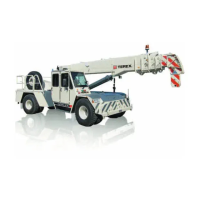
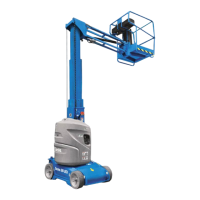
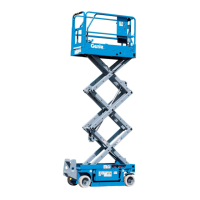
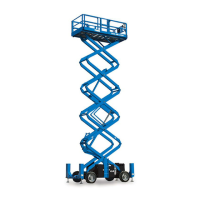
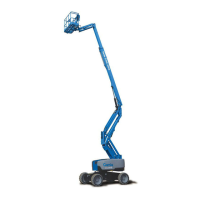
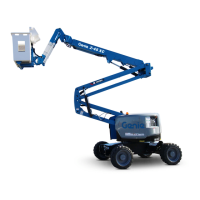





